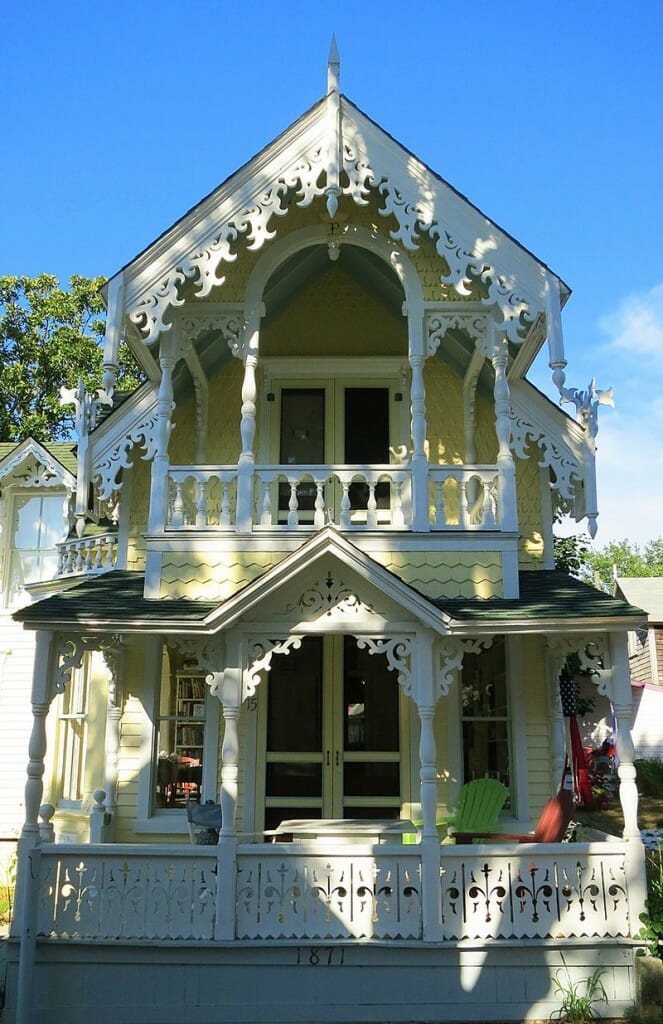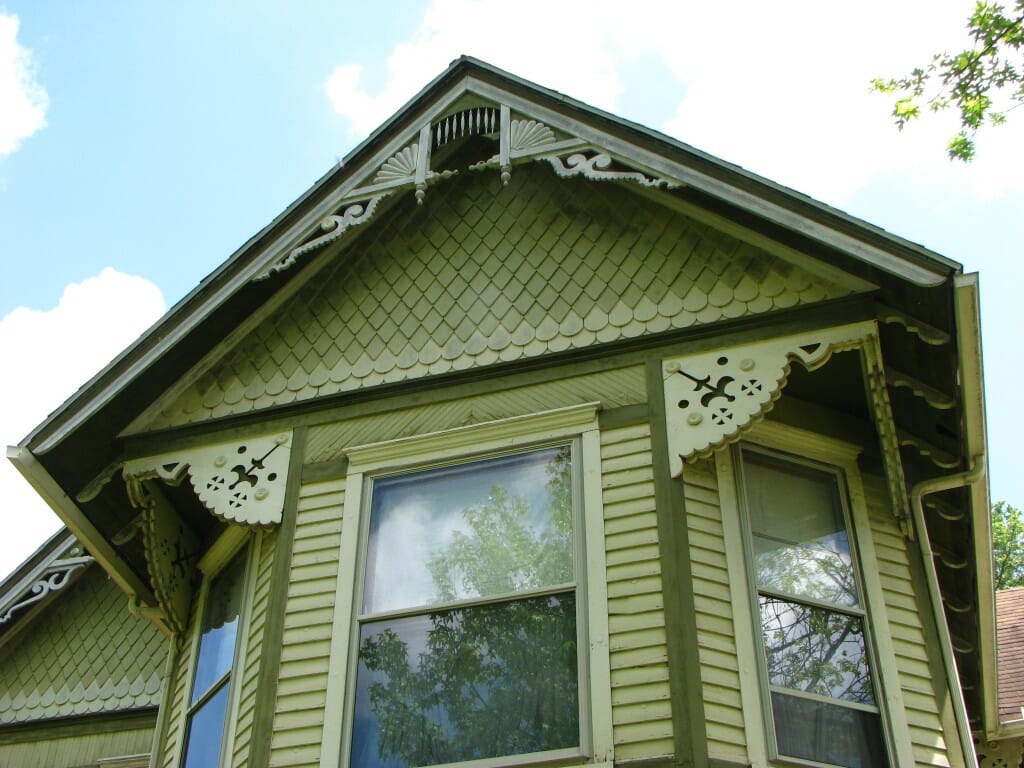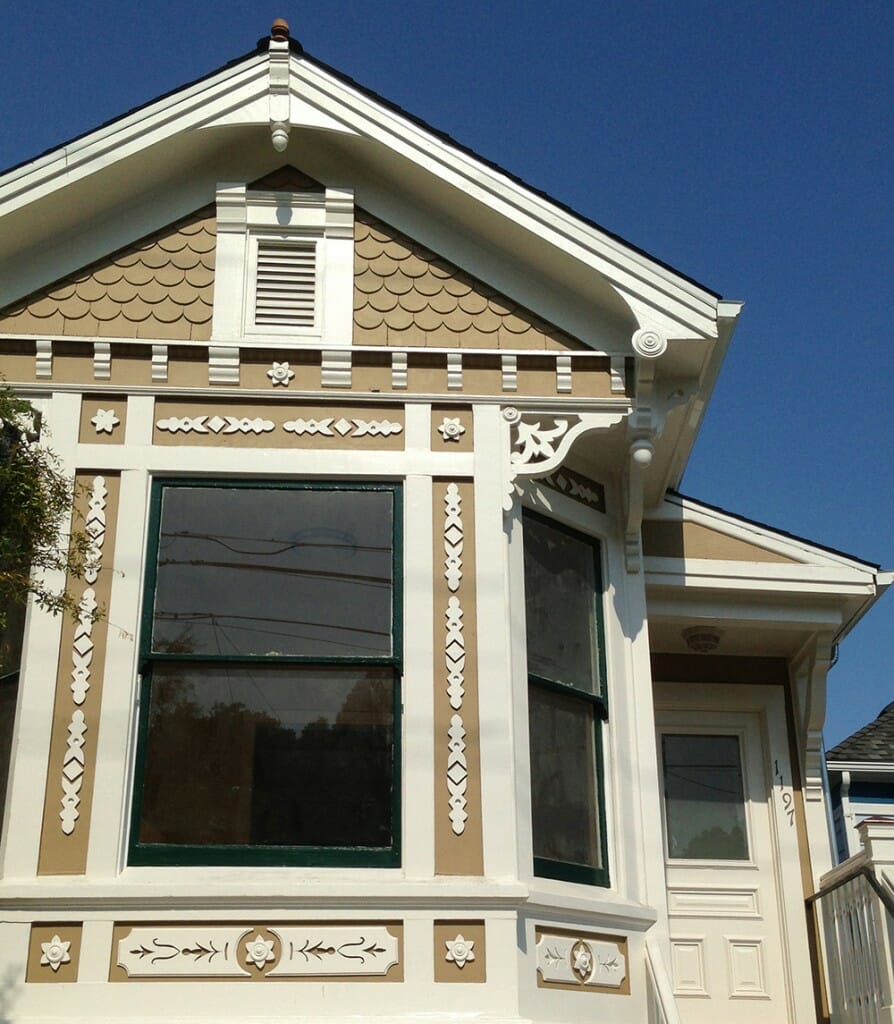Are you doing a siding project?
Modernize can pair you with three to four pros in your area, so you can compare options and save time and money.
Choosing the Right Material for Gingerbread Siding
Gingerbread siding varies depending on the home’s style and the materials used. During the Victorian era, homeowners sought to create unique, elaborate designs, which led to a range of styles and materials. Today, gingerbread siding is available in both traditional wood and modern synthetic options that offer better weather resistance.

Traditional Wood for Authenticity
Wood siding was the material of choice for gingerbread trim during the mid to late 1800s, a time when the economy was booming. Wood could be intricately cut into unique shapes for personalized designs. Though wood siding offers a historical touch, it requires regular maintenance. Homeowners must repaint every four to eight years, depending on conditions, to preserve the siding’s appearance. Wood is also more expensive than synthetic materials and requires extensive upkeep. However, if historical accuracy is a priority, wood remains the preferred choice.
Synthetic Materials for Easier Maintenance
Fiber Cement
Fiber cement is a popular synthetic option for gingerbread siding. It mimics the look of wood and can be cut and shaped to replicate traditional designs. Fiber cement requires less maintenance than wood because it doesn’t expand and contract as much. Paint adheres better, and it lasts longer without the need for frequent touch-ups.
Cellular PVC
Cellular PVC siding is another synthetic material that mirrors wood’s appearance. It’s made of PVC, similar to plumbing pipes, but has air pockets for added insulation and reduced weight. PVC is easy to shape and install and is highly waterproof, even without paint. When painted, it resembles wood closely and looks great when installed correctly.
Vinyl
Vinyl is a less popular choice for gingerbread siding, but it remains an affordable and low-maintenance option. Vinyl comes in a limited range of colors and typically requires painting to achieve the classic gingerbread look. While vinyl wears faster than other materials, it’s easy to install and doesn’t need frequent maintenance, making it a good option for those looking to save money.
Maintenance and Durability of Gingerbread Siding
The durability and maintenance of gingerbread siding depend on the material used.
Wood Siding
Wood siding lasts a long time if maintained properly. Repainting every 4-8 years helps preserve the wood’s condition and appearance. Regular upkeep is essential to protect the wood from the elements and maintain its charm.
Find the Right Contractor for Your Siding Project
Whether you’re ready to begin your project now or need some expert advice, our network of contractors are here to help. With a few simple questions, we’ll find the best local professionals for you
Fiber Cement and PVC Siding
Fiber cement and PVC require less maintenance than wood. Paint adheres longer, and these materials are designed to withstand sun exposure better than wood. Proper care will ensure they remain in good condition longer before needing replacement.
Vinyl Siding
Vinyl is a low-maintenance material that requires occasional washing and resealing around joints. While it doesn’t require paint for protection, it can wear out faster than other materials. Proper care can extend the life of vinyl siding, which typically lasts between 25 and 40 years.
Costs of Gingerbread Siding
Wood Siding
Wood is the most expensive option, ranging from $500 to $800 per square, depending on the complexity and type. A home with 1,500 square feet of exterior walls can cost between $7,500 and $12,000 just for the siding material, excluding installation.
Vinyl Siding
Vinyl siding costs between $200 and $300 per square, with scalloped siding costing $300 to $400 per square. For 1,500 square feet, expect to pay between $4,500 and $6,000 for materials before installation.
PVC Siding
PVC siding costs between $340 and $450 per square. For 1,500 square feet, materials alone will cost between $5,100 and $6,750, not including installation.
Fiber Cement Siding
Fiber cement costs between $250 and $350 per square. A 1,500-square-foot home will cost between $3,750 and $5,250 for the material alone, with installation costs being higher due to the need for custom cuts.
Installation and Disposal Costs
Installation costs vary depending on the material and the complexity of the design. Wood siding generally costs more to install, while vinyl is the most affordable. Additionally, homeowners must factor in the cost of removing and disposing of old siding. To get an accurate estimate, contact local contractors for quotes.
Find the Right Contractor for Your Siding Project
Whether you’re ready to begin your project now or need some expert advice, our network of contractors are here to help. With a few simple questions, we’ll find the best local professionals for you
Reviews from Real Homeowners
Welcome to Homeowner Resources! We are the Modernize blog. Modernize pairs more than 3 million homeowners a year with pre-vetted contractors in their area. This blog started because we believe homeowners should know everything about their homes, from how their HVAC works to which front door colors they might love. On Homeowner Resources, you can find information on every part of your home, right down to how you can negotiate with contractors to get the best price. Here's more about the blog.
Need a contractor? Learn more about how Modernize finds the right pro for you.






